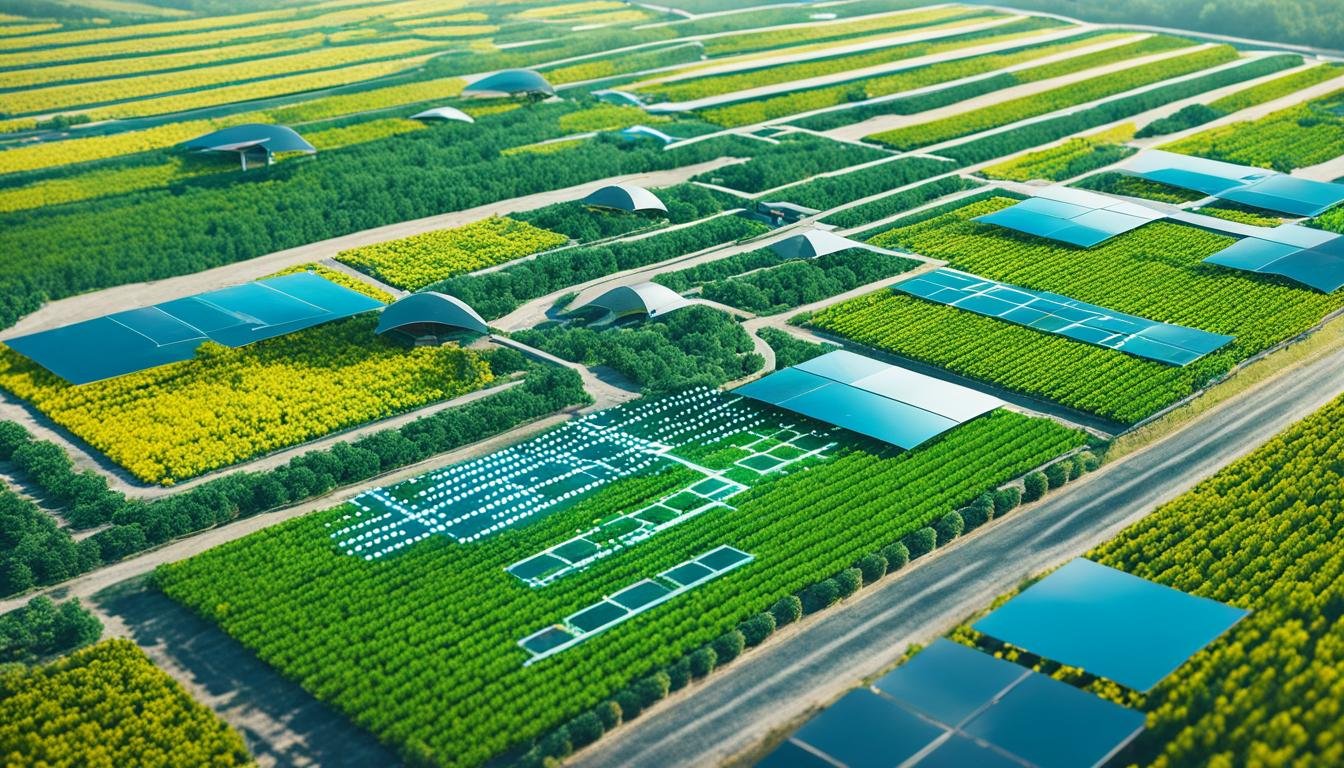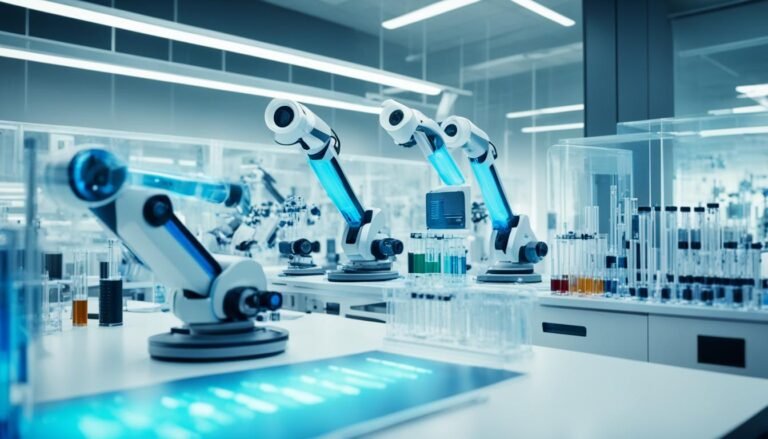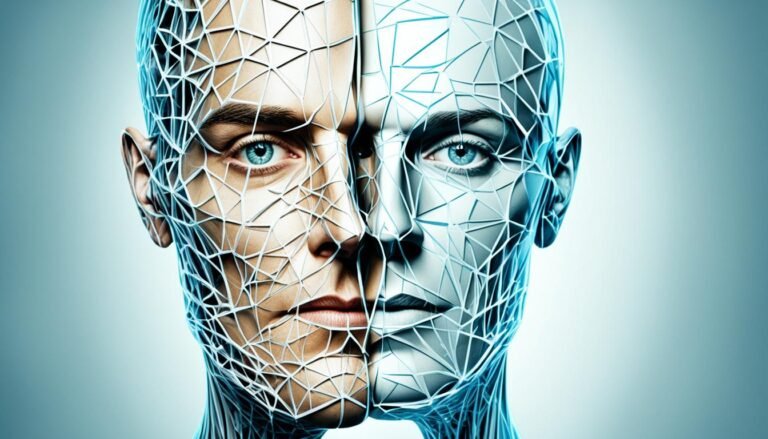IoT Applications: Implementing IoT solutions in various business sectors.
The Internet of Things (IoT) is changing the game fast, touching industries all over the world. By 2025, we expect to see over 41 billion connected IoT devices out there. This shows how big and powerful IoT is, and how it can help businesses grow.
IoT is used in many areas, like smart homes, industrial settings, cars, wearables, cities, tracking assets, predictive maintenance, and watching the environment. Adding IoT to these fields brings huge benefits. It leads to new ideas, changes how companies work, and makes things more efficient.
This piece will look at how IoT is changing industries. We’ll see how it makes things better, improves customer experiences, helps make smart choices, and keeps things safe and secure. Let’s dive into the exciting world of IoT and see how it’s making a difference in business.
Key Takeaways:
- IoT is growing fast, with over 41 billion connected devices by 2025.
- IoT touches many sectors, from smart homes to industrial settings, cars, wearables, cities, tracking assets, predictive maintenance, and environmental monitoring.
- Using IoT has big benefits, like making things more efficient, improving customer experiences, helping make smart choices, and keeping things safe and secure.
- IoT is bringing new ideas and changing how industries work by making processes better.
- Stay tuned to see how IoT is changing sectors like healthcare, retail, manufacturing, agriculture, and energy.
Benefits of Implementing IoT in various industries
IoT solutions change how businesses work. They make things more efficient, save money, improve customer experience, help make better decisions, and increase safety and security.
Enhanced Efficiency
IoT helps businesses work better by automating tasks and monitoring operations in real-time. This means less work for people and fewer problems. It makes businesses more productive and cuts costs.
Cost Savings
IoT can save businesses a lot of money. It helps track and manage assets, making sure they are used well and need less maintenance. It also helps control energy use, cutting down on bills and helping the environment.
Improved Customer Experience
IoT lets businesses offer services that feel more personal and interactive. By understanding what customers want, businesses can give them exactly what they need. This makes customers happier and more loyal.
Data-Driven Decision-Making
IoT creates a lot of data that can be used to make smart choices. This data helps businesses plan better, keep track of inventory, and predict what they need. It makes businesses run smoother and grow faster.
Increased Safety and Security
IoT helps keep people and things safe by monitoring things in real-time. With connected devices, businesses can quickly spot and fix problems. This keeps employees, customers, and valuable things safe from harm.
IoT Applications in Healthcare
IoT has changed how we care for patients and manage healthcare. It includes many things like remote patient monitoring, smart devices, and electronic health records. These technologies make healthcare better by making it more efficient, accurate, and effective.
Remote Patient Monitoring
IoT is big in remote patient monitoring. It lets doctors check on patients from home. They can track things like heart rate and blood pressure in real-time.
This cuts down on hospital visits and helps doctors act fast if something goes wrong.
Smart Medical Devices
Smart medical devices are key to better patient care. They send data wirelessly to doctors. For example, they can track how active you are and if you’re taking your medicine.
This helps doctors make better decisions and lets patients help manage their health better.
Electronic Health Records
IoT has made electronic health records better. Devices send patient info to records automatically. This cuts down on paperwork and makes sure records are always up-to-date.
Doctors can look at these records safely and easily, which helps everyone work better together.
Smart Hospitals
Smart hospitals use IoT to be more efficient. They use sensors and devices to do things like watch over patients and manage meds. For example, finding medical equipment is easier with IoT.
This makes things run smoother, uses resources better, and helps patients get better care faster.
In summary, IoT is changing healthcare for the better. It helps with things like remote monitoring, smart devices, and managing hospitals. As IoT grows, it will keep making healthcare better.
IoT Applications in Retail
Retail is always changing to meet what customers want and need. IoT technology is a big step forward in retail. It helps retailers give shoppers unique experiences, manage stock better, and run stores more smoothly.
IoT makes shopping more personal. Stores use data from many places like how customers act, social media, and what they buy. This helps stores give customers exactly what they like, making them happier and more loyal.
Smart shopping carts are another way IoT helps in retail. These carts have sensors and RFID tech to track what customers buy and how they move around. Stores use this info to make shopping better by placing products just right and knowing what customers like.
IoT is also key for managing stock. It lets stores keep an eye on what’s moving and what’s not. This means they can avoid running out of popular items and having too much of others. This keeps customers happy and helps stores make more money.
IoT also changes how stores are managed. It lets stores control things like lights, temperature, and security. For example, smart lights can change color and brightness based on who’s in the store. This makes shopping better and saves energy.
In the end, IoT is changing retail for the better. It gives shoppers unique experiences, helps stores manage stock, and makes running a store easier. By using IoT, retailers can offer great service and stay ahead in today’s fast-paced retail world.
IoT Applications in Manufacturing
IoT technology has changed the game in manufacturing. It has brought new levels of efficiency and productivity. By using IoT, manufacturers can make their operations better, manage supply chains well, and use predictive maintenance to boost performance and profits.
IoT helps with predictive maintenance by using connected sensors and real-time data. This lets manufacturers spot equipment problems and failures early. They can then plan maintenance at the best time, cutting downtime and making equipment more reliable. Predictive maintenance helps avoid big disruptions and boosts equipment effectiveness (OEE).
Smart factories are changing the game with IoT. These factories use automation and control systems connected by IoT devices. They collect and analyze lots of data to make production better, cut waste, and improve efficiency. With real-time insights, they can quickly adapt to market changes, meeting customer needs and staying ahead.
IoT is key in managing supply chains too. It gives real-time visibility and control, ensuring efficient inventory, timely deliveries, and less waste. Real-time data helps manufacturers make smart decisions, improve logistics, and streamline their supply chain.
IoT also helps suppliers, manufacturers, and distributors work together better. It automates processes, keeps track of inventory, and predicts demand changes. This lets manufacturers manage their supply chain well and quickly adapt to market shifts.
Key benefits of IoT in Manufacturing:
- Predictive maintenance for minimized downtime and enhanced equipment reliability.
- Efficient operations and increased overall equipment effectiveness (OEE).
- Smart factories for improved production processes and reduced waste.
- Real-time tracking and optimized supply chain management.
- Streamlined coordination between suppliers, manufacturers, and distributors.
IoT is transforming the manufacturing world into a connected ecosystem. It boosts efficiency, sustainability, and profits. As IoT evolves, manufacturers should use it to stay ahead and find new chances for growth.
IoT Applications in Agriculture
IoT is changing the way we farm, making farming smarter and more efficient. It helps farmers use resources better, grow more food, and take care of the land. With IoT, farmers use drones and automate greenhouses to improve how they grow crops and care for animals.
Agricultural Drones: Enhancing Precision Farming
Drones are now key for farmers. They help with tasks like taking pictures, making maps, checking on crops, and fighting pests. These drones have cameras and sensors that send back real-time info on crops. This lets farmers fix problems fast and use fewer pesticides.
Greenhouse Automation: Optimal Environment for Crop Cultivation
IoT is also changing greenhouses. It lets farmers control things like temperature, humidity, and light with sensors and actuators. This makes the perfect place for plants to grow, no matter the outside weather. By automating these things, farmers can grow crops better, lose less, and get more food.
Monitoring Climate Conditions: Maximizing Crop Yield
IoT sensors help farmers pick the best crops and grow them well. They track things like temperature, moisture, and soil health. This info helps farmers choose the right crops and water them right. With IoT, farmers can grow more food and use less water and resources.
Cattle Monitoring: Ensuring Livestock Health and Tracking
IoT helps with taking care of animals too. Farmers can keep an eye on their cows’ health, where they are, and how they act. This means they can catch sickness early and keep their cows safe. IoT sensors and data help farmers take better care of their animals.
In the end, IoT is making farming smarter. It’s all about using drones, automating greenhouses, watching the weather, and tracking animals. With IoT, farmers can grow more food, use less resources, and farm in a way that’s good for the planet.
IoT Applications in Energy
IoT technology has changed the energy industry for the better. It brings efficiency and productivity to the table. IoT helps energy companies work smarter and make better decisions.
IoT is key in remote asset monitoring. It uses sensors and connectivity to keep an eye on important things like power plants and renewable energy setups. This lets companies fix problems early, cut downtime, and boost performance.
“IoT technology allows energy companies to monitor their assets remotely, giving them the ability to detect issues before they become critical and cause significant disruptions.”
IoT also changes how we manage the energy grid. It collects and analyzes real-time data to improve grid performance and power quality. This helps grid operators manage energy better, reduce outages, and make the grid more stable.
IoT helps make smart decisions in the energy sector. It uses data to guide decisions on energy production, distribution, and use. This leads to better demand response, grid balancing, and energy efficiency.
Using IoT in energy boosts efficiency and helps the environment. It cuts energy waste and uses more renewable energy. This is good for the planet.
“The IoT revolution in the energy sector paves the way for more sustainable and eco-friendly energy practices, ultimately contributing to a greener future.”
The future is bright for energy and IoT. With new tech and connectivity, the possibilities are endless. This leads to a more efficient, reliable, and green energy system.
Conclusion
The Internet of Things (IoT) is changing many business areas. It’s making things like healthcare, retail, and manufacturing better. IoT helps these sectors work more efficiently, save money, and improve how they serve customers.
IoT lets businesses use lots of data to make better decisions. It connects devices and systems, making industries smarter and more connected. This leads to new ways of doing business, better operations, and more work getting done.
IoT is still growing and has a lot more to offer. Companies that use IoT will lead in innovation and stay ahead in the digital world. IoT is changing how businesses work and making the world more connected.







